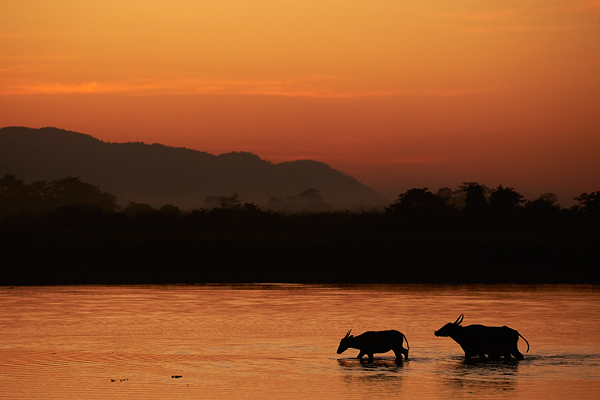Those of you who follow my work will know I am always way behind with my processing so it should come as no surprise that this collection of images and associated ramblings come from over 18 months ago back in late 2015. If you also follow my work you’ll probably recall my mentioning a number of childhood years spent in India and so this collection have a special resonance for me although the region of Assam, in the extreme north-east of the country was not one I had ever visited before but wanted to check out as part of a trip I was planing on running for Natures Images and which is now scheduled for January next year, full details of which can be found here.
Assam is a corner of India that has a very different feel, in part climatically, definitely culturally and also geographically as well. It was the home and indeed origin of english breakfast tea back in the day, but is now renowned for a more premium and select leaf and the plantations are prominent and very photogenic especially first thing in the morning.
The presence of a leaf picker helps on that front too.
The region runs along the banks and essentially parallel to the mighty Brahmaputra river and is bisected by a typically crazy road to travel along from the regional capital of Guwahati. This bisects its way through fields, tea plantations and woodland and the latter, even close to the road itself, is home to many species unique to this corner of the country with primates such as Hoolock Gibbon and Golden Langur.
I have vowed during the course of my work overseas these days to try to give a greater sense of where I have been rather than simply the wildlife to be found there and fortunately the main attractions of Assam, in the form of the magnificent marshland reserve that is Kaziranga National park, offers plenty of opportunity to do this, with both verdant woodland/jungle, simply stunning light to work with at either end of the day, and the sheer vastness of the Brahmaputra river itself when I was able to get close to it provided plenty of opportunity to do this.
But as impressive as the place itself is, Kaziranga is all about wildlife and a couple of species in particular the main one of these being the one-horned rhino. For reasons that are all to familiar in this part of the world (and elsewhere too to be fair) these magnificent pachyderms have fallen dramatically in numbers and current estimates are only just in excess of 3000 in total now. The fact that around 70% of these live here in Kaziranga not only underlines the importance of the place but also the huge risk this additionally places on them. The park itself is simply vast and predominantly covered by a large covering of tall wetland grasses which offer a perfect hiding place for rhinos as well as food for them to graze on.
Once they step out into a more open environment though, the one horn aside, their very different characteristics become immediately obvious – long folds of skin and almost wart-like bumps all over really do give a truly dinosaur-like impression, reminding me of they toy Triceratops I used to play with as a kid!
Rhino’s are a surprisingly difficult animal to photograph as they often don’t do that much other than stand and feed and as a result they tend to rely heavily on the environment and lighting to create the sort of opportunity you look for as a photographer. Fortunately the environment at Kaziranga offers both close up encounters as well as distant ones, and the lighting can be sublime as I’ve said already: lob in some judicious use of monochrome processing too and the chance to do more comes if you’re patient enough.
The sheer number of rhinos to be seen on a typical game drive almost always ran into double figures and there was always a chance of becoming a bit blasé about seeing them so it was to remind myself what a treat it was and just how special this place really is. Mind you it offered much more besides too: it is supposed to be the national park with the greatest density of tiger anywhere in India but the habitat is such that spotting one is sheer luck and although we were aware of people who had had such glimpses during our time there it didn’t happen for us. We did though have a number of encounters with the rhinos fellow thick-skinned mammal in the form of asian elephant.
All too often elephant seen in this country are working elephant with all that entails but here in Kaziranga a healthy population of wild living animals exists: I distinctly remember watching a BBC documentary showing them crossing the main road that runs through the park when the river was in full flood and they needed to move to the higher ground. At the time of year I was there though this was far from necessary for them and so we regularly came across them either enjoying the water of a wetland area or feeding on the lush vegetation in the forest.
They are significantly smaller that their African relatives but when one comes wandering unannounced out of the vegetation towards your vehicle sporting a mynah bird for headgear they seem big enough though!
Ultimately Kaziranga is all about rhino conservation though and for me the magical light that Assam can offer. Coming across a mother and calf one evening was somewhat apt and as for the sunsets, well I’ll let my closing pictures tell their own tale.






















Your photos are great!! I haven’t been to this part of my country yet. but soon…..
Well worth making the time. Thanks.